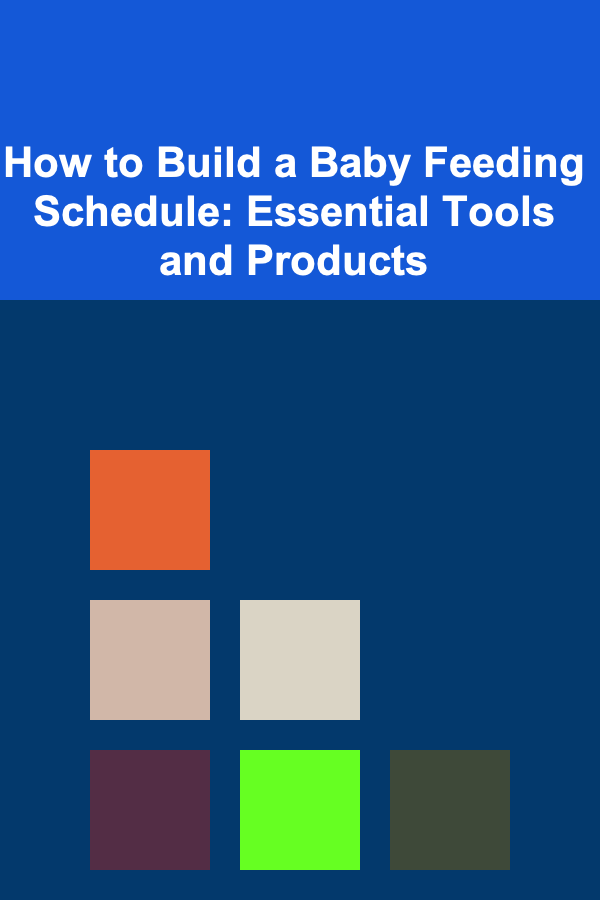
How to Improve Website Load Speed: A Checklist for Faster Performance
ebook include PDF & Audio bundle (Micro Guide)
$12.99$11.99
Limited Time Offer! Order within the next:

In today's digital age, website speed is not just a technical concern---it's a critical element for user experience, SEO, and conversion rates. A slow website can lead to higher bounce rates, lower search engine rankings, and frustrated users. On the other hand, a fast-loading website creates a smooth experience that encourages users to engage, return, and convert.
Improving website load speed doesn't need to be overwhelming. With a systematic approach, you can identify bottlenecks and implement practical solutions that drastically improve your site's performance. This checklist will guide you through the steps necessary to optimize your website speed and provide actionable recommendations that you can implement today.
Assess Your Current Website Speed
Before diving into optimization techniques, it's important to know where you stand. Various tools can help you measure your website's load time, identify performance issues, and offer suggestions for improvement.
Tools to Assess Website Speed:
- Google PageSpeed Insights: This free tool by Google analyzes your website on both mobile and desktop devices, offering a detailed report with suggestions for performance improvements.
- GTmetrix: GTmetrix provides a comprehensive overview of your website's performance with insights on load time, total page size, and other key metrics.
- Pingdom: Pingdom offers monitoring and performance analysis to help you identify issues affecting your load time.
- WebPageTest: This tool allows you to test your website's performance from different locations and on various devices.
Key Metrics to Focus On:
- First Contentful Paint (FCP): The time it takes for the first element of your page (like text or an image) to appear.
- Largest Contentful Paint (LCP): The time it takes for the largest visible element (often a hero image or the main text) to load.
- Time to Interactive (TTI): The time it takes for the page to become fully interactive and responsive.
- Total Page Load Time: The total time it takes for all elements on your page to load.
Once you've assessed your current speed, you'll have a benchmark to compare your improvements against.
Minimize HTTP Requests
Every element on your page---images, scripts, stylesheets, fonts, etc.---requires an HTTP request. The more HTTP requests your website makes, the longer it will take to load.
Strategies to Minimize HTTP Requests:
- Combine CSS and JavaScript Files: Instead of loading multiple CSS and JavaScript files, combine them into one or a few files. This reduces the number of requests and decreases load time.
- Use CSS Sprites for Images: If your site uses small images (like icons), combine them into a single image sprite and use CSS to display specific parts of it. This reduces the number of image requests.
- Remove Unnecessary Plugins: Plugins can add extra HTTP requests. Audit your site regularly and remove any plugins that are not essential.
Optimize Images
Images often take up the majority of a webpage's data size, and large images can significantly slow down page load times. Optimizing images is crucial for faster website performance.
Image Optimization Tips:
- Use the Right File Format: JPEG is best for photos, PNG is ideal for images with transparency, and SVG should be used for logos or icons. Consider using WebP for better compression without loss of quality.
- Compress Images: Tools like TinyPNG, ImageOptim, or ShortPixel can help you compress images without sacrificing too much quality.
- Implement Lazy Loading: Lazy loading ensures that images are only loaded when they enter the viewport (the visible part of the web page). This reduces initial load time and speeds up the user's experience.
- Set Image Dimensions: Ensure that images are displayed at their intended size. Don't load a 3000px-wide image if it's only displayed at 600px.
Enable Browser Caching
Caching allows your website to store static resources like images, JavaScript, and CSS on the user's device for future visits. By enabling caching, users don't need to download these resources again, reducing load times on subsequent visits.
How to Enable Browser Caching:
- Set Expiry Dates : In your
.htaccessfile (for Apache servers) or through your content management system (CMS), set expiration dates for static resources like images, JavaScript, and CSS files. This tells the browser when to re-fetch the files. - Use Cache-Control Headers: For more fine-tuned caching, set Cache-Control headers to define how long resources should be cached and whether they should be revalidated.
- Leverage CDN Caching: If you're using a Content Delivery Network (CDN), configure it to cache static content across various servers, improving load times for users globally.
Minify and Compress CSS, JavaScript, and HTML
Minification involves removing unnecessary characters (like spaces, comments, and line breaks) from your CSS, JavaScript, and HTML files. Compression reduces the file size of these resources.
Minification and Compression Tips:
- Minify CSS, JavaScript, and HTML: Tools like UglifyJS (for JavaScript), CSSNano (for CSS), and HTMLMinifier (for HTML) can help you automate the process of minifying your code.
- Use Gzip or Brotli Compression : Gzip and Brotli are two popular compression methods that reduce the size of your files as they are transferred from the server to the user's browser. You can enable them on your server via
.htaccessor Nginx configuration files.
Implement a Content Delivery Network (CDN)
A Content Delivery Network (CDN) is a network of geographically distributed servers that cache and deliver content from the server closest to the user. This reduces the distance between the server and the user, resulting in faster load times.
Benefits of Using a CDN:
- Reduced Latency: CDNs deliver content from servers located closer to the user, minimizing latency and improving load times.
- Faster Load Times for Static Content: CDNs are particularly effective for delivering static content like images, videos, and style sheets.
- Scalability: CDNs help distribute traffic load, ensuring your website can handle higher traffic volumes without slowing down.
Popular CDN providers include Cloudflare, KeyCDN, and Amazon CloudFront.
Use Asynchronous and Deferred Loading for JavaScript
JavaScript can block the rendering of a webpage, slowing down load times. By controlling how and when JavaScript files are loaded, you can improve your website's speed.
JavaScript Optimization Tips:
- Async Loading : Use the
asyncattribute for non-essential JavaScript files. This allows the file to be loaded in the background while other resources are still being processed. - Defer Loading : Use the
deferattribute to load JavaScript files after the page has finished parsing, which prevents them from blocking rendering. - Reduce JavaScript File Size: Like CSS, JavaScript should be minified to reduce the overall size. Use tools like Webpack or Babel to bundle and compress JavaScript files.
Reduce Server Response Time
Server response time is the time it takes for your server to respond to a request from a user's browser. A slow server response time can drastically affect your website's performance.
Strategies to Improve Server Response Time:
- Choose a Reliable Hosting Provider: The performance of your web host is crucial. Opt for a reputable provider with fast servers, or consider upgrading to a dedicated or VPS hosting plan if you're currently on shared hosting.
- Use HTTP/2: HTTP/2 is a newer version of the HTTP protocol that enables multiplexing (multiple requests over a single connection), reducing latency and speeding up data transmission.
- Optimize Database Queries: If your website relies on a database (e.g., WordPress), optimize your database queries and use database caching tools to reduce query processing time.
Enable HTTP/2
HTTP/2 is a newer protocol that offers performance improvements over HTTP/1.1. It allows for multiplexing, header compression, and faster data transmission.
Why HTTP/2 Helps:
- Multiplexing: HTTP/2 allows multiple requests to be sent over a single connection, eliminating the need for multiple TCP connections and reducing load time.
- Header Compression: HTTP/2 compresses headers, reducing the amount of data that needs to be transferred.
- Server Push: This feature allows the server to send resources to the client before they are explicitly requested, speeding up the rendering process.
Ensure your server supports HTTP/2 and that your website is configured to use it.
Monitor and Continuously Optimize
Improving website load speed is not a one-time task; it's an ongoing process. Regularly monitor your website's performance to ensure it remains optimized as new content, features, or traffic loads are introduced.
Continuous Optimization Tips:
- Regularly Audit Your Site: Use performance testing tools to regularly monitor your website's load time and identify areas for improvement.
- Stay Updated on Best Practices: Website optimization techniques evolve over time. Stay up-to-date with the latest practices to ensure your site remains fast and competitive.
By following this checklist and continuously optimizing your website, you can significantly improve its load speed, providing a better user experience, boosting SEO rankings, and increasing conversion rates. Remember, speed is not just a feature---it's a necessity. The faster your website performs, the happier your visitors will be.
Reading More From Our Other Websites
- [Organization Tip 101] How to Organize Beauty Tools for Easy Cleaning
- [Metal Stamping Tip 101] Innovative Brass Stamping Applications in Automotive and Aerospace Industries
- [Survival Kit 101] Best All‑Season Survival Kit for Remote Cabin Owners in Harsh Climates
- [Home Family Activity 101] How to Plan a DIY Home Olympics for the Family
- [Screen Printing Tip 101] Maintaining & Storing Your Screen Printing Gear for Longevity and Consistency
- [Personal Finance Management 101] How to Start Investing in Stocks with Little Money
- [Home Soundproofing 101] How to Soundproof a Home Recording Studio on a Budget
- [Home Security 101] How to Prevent Break-ins with Simple Home Security Measures
- [Home Family Activity 101] How to Plan a Fun Family Game Night at Home
- [Personal Care Tips 101] How to Avoid Greasy Hair When Using Hair Oil

How to Build a Baby Feeding Schedule: Essential Tools and Products
Read More
How to Build a Seasonal Garden Maintenance Checklist
Read More
How to Keep Your Pet's Skin Healthy and Free from Irritations
Read More
How to Make Family Baking Time Fun and Educational
Read More
Mastering Social Media Advertising: A Comprehensive Guide
Read More
How to Integrate Client Feedback into Your Web Design Planner
Read MoreOther Products

How to Build a Baby Feeding Schedule: Essential Tools and Products
Read More
How to Build a Seasonal Garden Maintenance Checklist
Read More
How to Keep Your Pet's Skin Healthy and Free from Irritations
Read More
How to Make Family Baking Time Fun and Educational
Read More
Mastering Social Media Advertising: A Comprehensive Guide
Read More